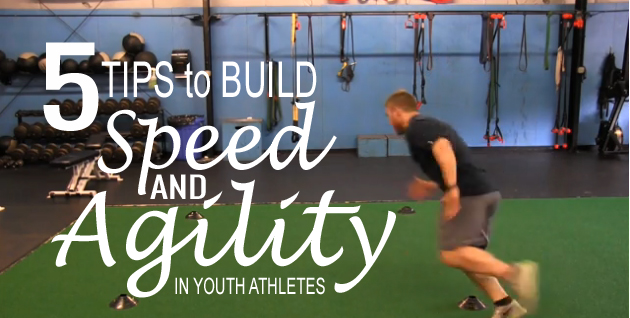

Wondering how to increase speed and agility in youth athletes?
Frustrated with youth athletes lack of motivation and ability to stick with a program?
Athletes need a jump-start to increase their sports performance?
You may have answered yes to one, two or all three of these questions.
I want to give you five quick tips to help build speed and agility in youth athletes. But first, I need you to answer a question:
Are you trying to train youth athletes like adults?
Seriously, are you pushing them with advanced training systems designed for older athletes?
If so, first consider that youth athletes need training for stage specific growth and development. You wouldn’t expect your twelve year old to drive a car. Don’t expect a kid to behave like an older, mature athlete with an age-appropriate hormonal and muscular response to training.
Don’t use complicated training systems with youth athletes. These ‘wiz-bang’ systems miss out on key developments that can be obtained for long-term speed, agility and athleticism.
With that in mind, here are…

All things being equal, a stronger muscle is a faster muscle. But, sending a youth athlete to the weight room to hammer out squats, benches and curls may be ineffective … and can lead to injury and burnout .
Youth athletes can be categorized into THREE major school levels: Elementary School, Middle School and High School. The training for an athlete in Elementary or Middle School is different than training for a High School athlete. Each level has unique growth and developmental stages , requiring different types of training and exercises to maximize sports speed.
When youth athletes perform age-appropriate resistance or strength training, strength is increased in the correct muscles, increasing speed and quickness. The F.A.S.T. Foundational Strength Training System is designed to individualize strength training for Elementary, Middle and High School athletes.
Youth athletes love games. They love to play. Kids learn through play. Games are a great way to engage youth athletes. But don’t mistake using games for wasted time. On the contrary, games reinforce the skills of their sport. They can be the actual skills used in the their sport or fun variations of those skills.
Game Tip #1: Get the kids using both sides of their body as much as possible. If your athletes are throwing athletes, have them throw with their opposite hand. If they kick with one foot, make them use the non-dominant side during the game.
Game Tip #2: Use variety as much as possible when setting up games. Get creative. Find out what games they are playing on their phone and come up with an ‘in real life version’.
Game Tip #3: Keep the athletes moving. I never use elimination games or games where someone is “out.” Why would I want them to sit down and do nothing but watch? They feel dejected. They aren’t exercising and they aren’t reinforcing skills. If they get caught or tagged have them move to the side of the playing area and perform an exercise like 5 pushups before returning to game.

Often times, coaches and parents concentrate on linear speed. Perhaps this is because an athlete’s “40 meter” time is a way of measuring their ability. But in reality… how often in sports (other than Track and Field) do athletes run in a straight direction?
Most athletes have to move in all over the field or court, making quick changes of direction.
This is why youth athletes should drill with cones and ladders to promote change of direction.
The best part? They have a lot of fun doing it. Youth athletes enjoy the challenge of following cues to change directions.